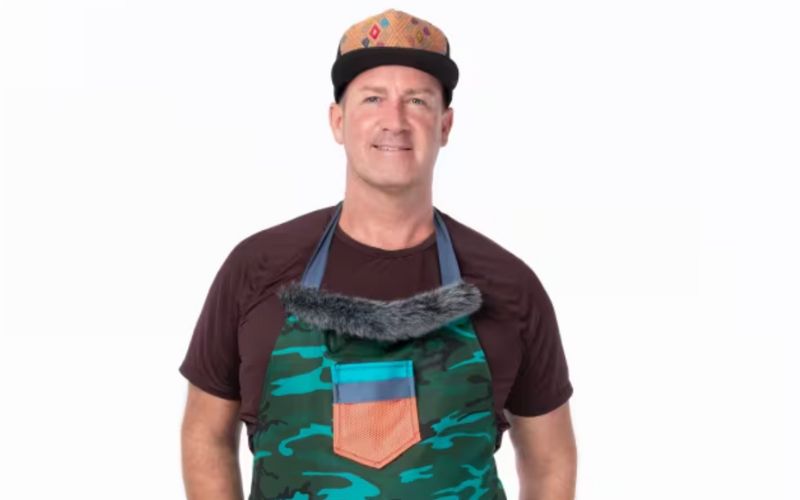
- Details
- By Kaili Berg
Renowned Cree Métis and Two-Spirit artist, activist, fashion designer, and educator Jason Baerg is set to make waves once again as they unveil their latest collection at the Southwestern Association for Indian Arts (SWAIA) Native Fashion Week on May 5.
Operating under their fashion label, Ayimach Horizons, Baerg will introduce the Kapishkum (Transcend) Collection for SWAIA, paying tribute to their Cree and Métis heritage.
Inspired by the essence of water and the changing seasons, the collection blends traditional materials like leather and silk with contemporary design elements. Each piece reflects the fluidity and transformative power of water, with transparent fabrics and metallic accents adding a touch of elegance, while dynamic touches of horsehair infuse the collection with movement, evoking the spirit of the land.
After earning recognition as one of Vogue's "21 Artists to Know at This Year's Santa Fe Indian Market," Baerg's creative journey has taken them to prestigious platforms such as the Musée McCord Stewart in Montreal and Fashion Art Toronto.
Native News Online spoke with Baerg about their journey in the fashion industry, focusing on their inspiration, challenges faced by Indigenous artists, and their aspirations to contribute to the history of art and fashion.
This article has been edited for clarity and length.
What inspired you to get into the fashion industry?
I started my first capsule collection in 2018, in the resort space, with the Fashion Art Gallery in New York City. I've always loved fashion, being raised by strong Indigenous women. I'm also two-spirit. Fashion was such a powerful vehicle in the 80s, making it an expressive art form for me. I'm also an artist, a tenured professor in drawing and painting at OCAD University in Toronto, which holds the largest painting department in North America.
What are you most looking forward to about showcasing the Kapishkum (Transcend) Collection at SWAIA Native Fashion Week?
I started this conceptual journey focusing on East-West sunrises and honoring elements like fire, earth, and metals. We'll experience all the beautiful colors of water and its transformative power on the runway this year.
Water seems to play a significant role in the collection.Could you elaborate on the symbolism of water and how it informs your artistic expression?
This year, I'm honoring water. Copper is also a key signifier because copper purifies water. So, we're going to be experiencing all the beautiful colors of what water lives in. We also think about transformation. Water starts out as liquid, vaporizes to clean itself, rises through the atmosphere, and then returns as rain, snow, or hail. It carries memory and a story. There's so much that water does, so I'm really honoring water through this collection. I'm looking forward to presenting that work.
What challenges have you faced as an Indigenous artist in the fashion world, and how have you overcome them?
I'm white presenting. I just want to be honored and respected as an equal. Lateral violence is improving, but being white passing has been a challenge. My grandmother and great-grandmother went to residential school, andsome married white men for safety. I believe Native makers deserve space for mastery. That's what I welcome in the next phase of making — to focus and honor my gift.
What message or feeling do you hope your audience takes away at SWAIA from experiencing the Kapishkum Collection?
I believe in our people and cultural teachings. I want them to feel empowered,inspired, to call in their dreams and live them, propelling forward together in power.
Finally, looking ahead, what are your aspirations for the future of your career?
I have an exciting project in Los Angeles within a museum space. I've previously presented at the National Gallery of Canada, making me one of the first Native artists there in the fashion space. Next, I'll be opening a fashion festival in Montreal, reaching an audience of 10,000 in August. My aspirations include making valuable contributions to art and fashion, particularly for my people and our history, akin to greats like Yves Saint Laurent.
More Stories Like This
Vision Maker Media Honors MacDonald Siblings With 2025 Frank Blythe AwardFirst Tribally Owned Gallery in Tulsa Debuts ‘Mvskokvlke: Road of Strength’
Zuni Youth Enrichment Project and Partners at Ho’n A:wan Productions Launch 8th Annual Delapna:we Project
Chickasaw Holiday Art Market Returns to Sulphur on Dec. 6
Center for Native Futures Hosts Third Mound Summit on Contemporary Native Arts
Help us defend tribal sovereignty.
At Native News Online, our mission is rooted in telling the stories that strengthen sovereignty and uplift Indigenous voices — not just at year’s end, but every single day.
Because of your generosity last year, we were able to keep our reporters on the ground in tribal communities, at national gatherings and in the halls of Congress — covering the issues that matter most to Indian Country: sovereignty, culture, education, health and economic opportunity.
That support sustained us through a tough year in 2025. Now, as we look to the year ahead, we need your help right now to ensure warrior journalism remains strong — reporting that defends tribal sovereignty, amplifies Native truth, and holds power accountable.
 The stakes couldn't be higher. Your support keeps Native voices heard, Native stories told and Native sovereignty defended.
The stakes couldn't be higher. Your support keeps Native voices heard, Native stories told and Native sovereignty defended.
Stand with Warrior Journalism today.
Levi Rickert (Potawatomi), Editor & Publisher


